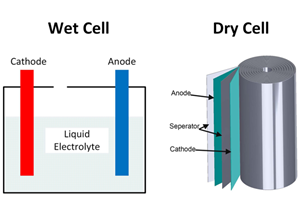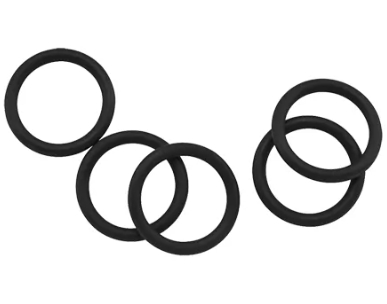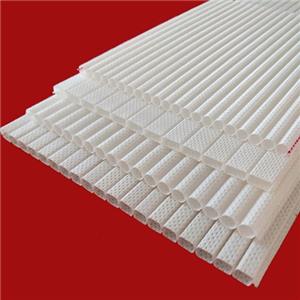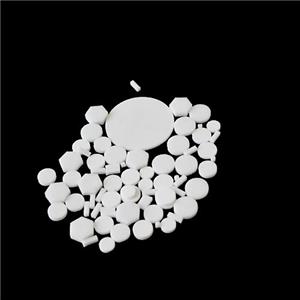Dry cell vs wet cell batteries
- By: JinHan
- Nov 24,2022
follow us
One of the obvious differences between dry cell batteries and wet cell batteries is that the electrolytes of wet cell batteries are liquid, while the electrolytes of dry cell batteries are colloidal or solid. They have different advantages and disadvantages due to different manufacturing materials. So which is better between dry cell batteries and wet cell batteries?
The general shell of the wet cell battery is transparent, and the electrolyte inside can be seen from the outside. Generally, the small capacity is a dry cell battery, and the large capacity above 120AH is a wet cell battery. Well maintained wet cell batteries will have a longer service life than dry cell batteries. If they are not well maintained, their service life will be shorter than that of dry cell batteries!
The most feared thing about wet cell batteries is the lack of liquid. Regularly observe the liquid level of the battery. When the liquid is lacking, add distilled water or electrolyte in time (depending on the battery power, add electrolyte when the battery power is obviously insufficient, and charge it in time), and maintain the battery at the same time. Apply a little grease on both ends of the + and - electrodes of the battery to prevent corrosion at both ends of the electrodes and prolong the service life of the battery!
Wet cell battery
- Advantages: strong instantaneous high current discharge capacity, strong power, and strong load capacity.
- Disadvantages: poor battery life, poor deep discharge capacity, and poor deep cycle life.
The wet cell battery has a lot of water, it is troublesome to charge, it is heavy, and the price is high, but it has a large capacity and is suitable for heavy goods!
Because of the high liquid content in the battery, it is usually called "wet cell battery". The liquid in the wet cell battery is relatively easy to lose, and it is necessary to replenish water frequently, so it is also called a maintainable battery. This kind of battery is mostly used in automobiles and motorcycles, and the discharge current is relatively large! So it is also called traction battery, start battery.
The electrolyte of the wet cell battery will be lost during the charging and discharging process, so it needs maintenance, and it will be damaged if it is not properly maintained.
The scientific name of dry cell battery is valve-regulated closed lead-acid battery. The outer casing is opaque, and the liquid cannot be seen when the filling hole is opened. It hardly needs maintenance and saves worry and effort!
The advantages: no maintenance required in normal use, strong deep discharge capability, strong battery life, long deep cycle life, dry cell battery is easy to charge with less water (dry cell battery), light weight, moderate price, but small capacity, suitable for light load use!dry cell batteries are also regular maintenance-free batteries used in mainstream cars and motorcycles. This kind of battery can be used directly in the car after being sold without adding water. There is no need to check the electrolyte during use, do not add water, and do not open the sealing cover under any circumstances. This type of battery has a very low self-discharge capacity and is suitable for long-term storage. This is the real maintenance-free battery, and the service life will be longer. The recycling cost of used batteries is high, and the production cost of enterprises is high, so the price is relatively high.
Depends on what kind of electric vehicle you have, freight or transportation?
If it is freight and there is enough space in the car, then a large-capacity battery needs to be installed. Large-capacity dry cell batteries will be very expensive. From the perspective of cost performance, water will be chosen. If it is a scooter, it must be dry, and dry cell batteries are also divided into lithium batteries and maintenance-free batteries. Lithium batteries are more expensive and light. Maintenance-free is enough, that is to say, you can choose the popular one on the market.
Maintenance-free batteries: Maintenance-free batteries are now confused, especially for motorcycles. The maintenance-free battery said by the manufacturer is only after the electrolyte is added for the first time, and the electrolyte should not be added for 1-3 years in the future. In fact, this is a wet cell battery, and the better point is a sealed lead-acid battery, which cannot be said to be a real maintenance-free battery. This type of battery is actually low-cost and of average quality. In the past, domestic batteries used white and somewhat transparent casings, so that the electrolyte inside could be seen; but now they are packaged in opaque black casings and sold at high prices with the trademark of high-end goods.
Electric bicycles and electric motorcycles have become important means of transportation in large, medium and small cities and are generally accepted by people. Compared with traditional bicycles, electric vehicles are generally more expensive, so the service life of electric vehicles has become the most concerned issue. In fact, the battery is one of the core components of an electric bicycle, and the service life of the battery largely determines the service life of the electric vehicle.
The starting current of electric vehicles is very large, especially the electric motor of high-power motors, the starting current is larger. The high current will damage the battery plate. The best way is to start the electric vehicle after riding like a bicycle before starting.
After the battery has been used for a period of time, some active substances will inevitably sink. If the active substances are not activated in time, it will inevitably have some impact on the capacity of the battery. Therefore, when the electric vehicle is often used, the battery should be deeply discharged once a quarter.
--End--

 English
English Russian
Russian Portuguese
Portuguese Arabic
Arabic Bangla
Bangla Indonesian
Indonesian








